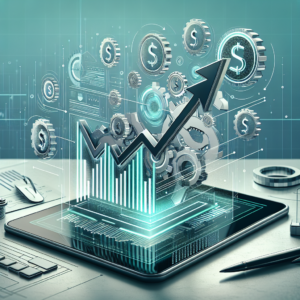Predictive Modelling: Anticipating Market Trends
In today’s fast-paced business world, staying ahead of the curve is more important than ever. One of the most effective ways to achieve this is through predictive modeling. By anticipating market trends, businesses can make informed decisions that drive growth and innovation. So, what exactly is predictive modeling, and how can it help your business? Let’s dive in! 🚀
Table of Contents
1. Understanding Predictive Modelling
2. How Predictive Modelling Works
3. Benefits of Anticipating Market Trends
4. Real-World Applications
5. Challenges and Considerations
6. Conclusion
7. FAQs
Understanding Predictive Modelling
Predictive modeling is a statistical technique that uses historical data to predict future outcomes. Essentially, it’s like having a crystal ball for your business—but one based on data and algorithms rather than magic! By analyzing patterns and trends from past data, predictive models can forecast what might happen next, helping businesses to plan and strategize effectively.
How Predictive Modelling Works
At the core of predictive modeling are algorithms and machine learning. These tools analyze vast amounts of data, recognizing patterns that might not be visible at first glance. Here’s a simplified look at the process:
1. **Data Collection**: Gather relevant historical data.
2. **Data Analysis**: Use algorithms to analyze the data and detect patterns.
3. **Model Building**: Develop a predictive model based on the analyzed data.
4. **Validation**: Test the model to ensure its accuracy.
5. **Implementation**: Use the model to forecast future trends.

Benefits of Anticipating Market Trends
By leveraging predictive modeling, businesses can enjoy numerous benefits:
🔍 **Enhanced Decision-Making**: With accurate forecasts, businesses can make better-informed decisions.
💡 **Innovation**: Anticipating trends allows companies to innovate and adapt quickly.
📈 **Competitive Advantage**: Staying ahead of trends provides a significant edge over competitors.
💰 **Cost Efficiency**: Predictive insights can help optimize operations and reduce costs.
Real-World Applications
Predictive modeling is used across various industries. Here are a few examples:
• **Retail**: Predicting customer behavior to optimize inventory and improve sales.
• **Finance**: Anticipating stock market trends to make smarter investment decisions.
• **Healthcare**: Forecasting disease outbreaks to allocate resources effectively.
• **Marketing**: Tailoring campaigns based on predicted consumer preferences.
Challenges and Considerations
While predictive modeling offers immense potential, it’s not without challenges:
💾 **Data Quality**: Poor quality data can lead to inaccurate predictions.
🔄 **Constant Change**: Markets are dynamic, requiring models to be consistently updated.
🔒 **Privacy Concerns**: Using large datasets can raise privacy and ethical issues.
Conclusion
Predictive modeling is a powerful tool for any business looking to stay ahead in the market. By anticipating trends, companies can innovate, make informed decisions, and maintain a competitive edge. While there are challenges, the benefits of predictive modeling make it a worthwhile investment for forward-thinking businesses. Ready to gaze into the future of your business? 🧙♂️
FAQs
1. What is predictive modeling used for?
Predictive modeling is used to forecast future events or trends based on historical data, helping businesses make informed decisions.
2. How accurate are predictive models?
The accuracy of predictive models depends on the quality of the data and the algorithms used. Regular updates and validations enhance accuracy.
3. Can small businesses benefit from predictive modeling?
Absolutely! Even small businesses can leverage predictive modeling to optimize operations, improve customer experience, and forecast sales trends.
4. What tools are needed for predictive modeling?
Common tools include machine learning platforms like TensorFlow, data analysis software like R or Python, and business intelligence tools like Tableau.
5. Is predictive modeling ethical?
While predictive modeling is a powerful tool, ethical considerations regarding data privacy and consent must be addressed to ensure responsible use.












